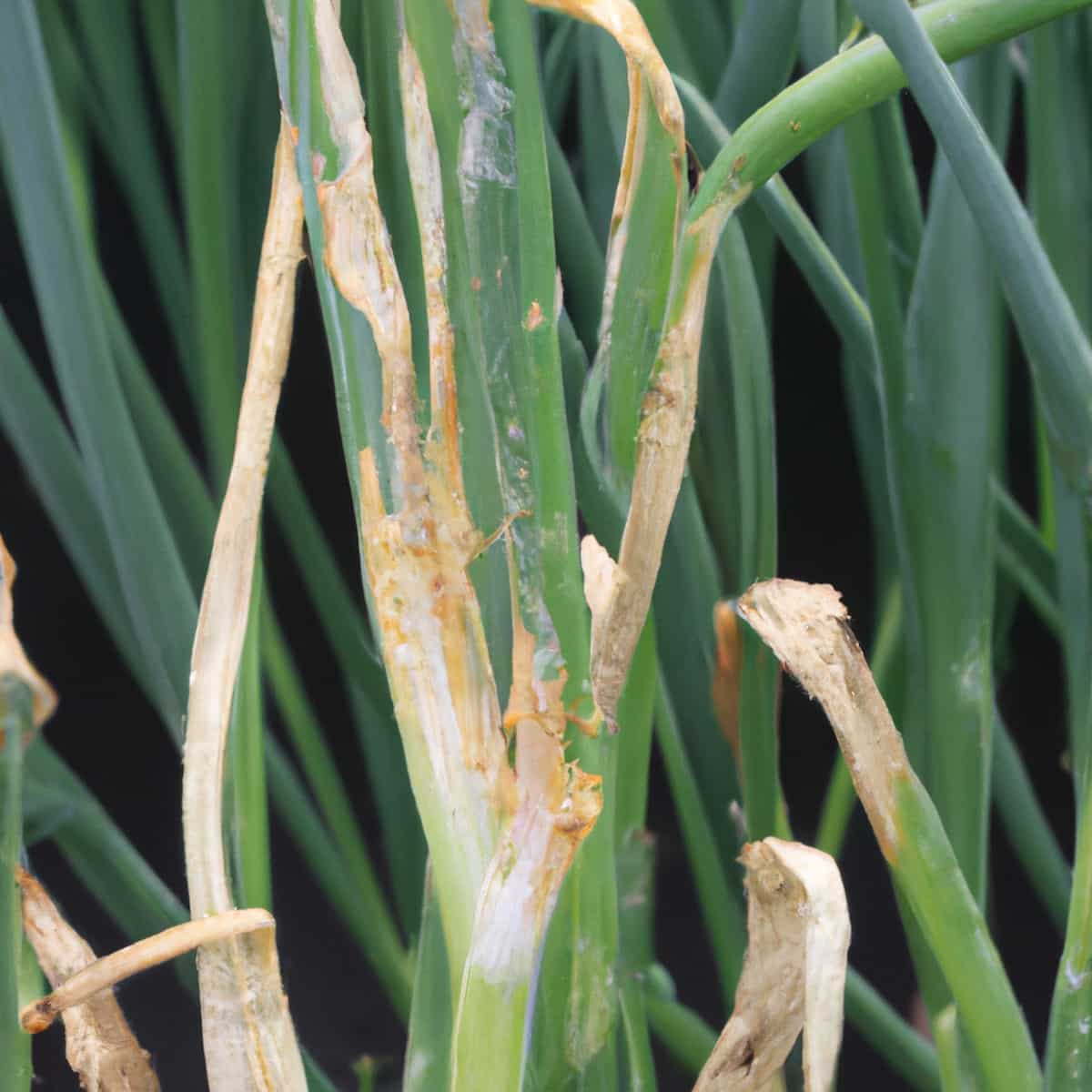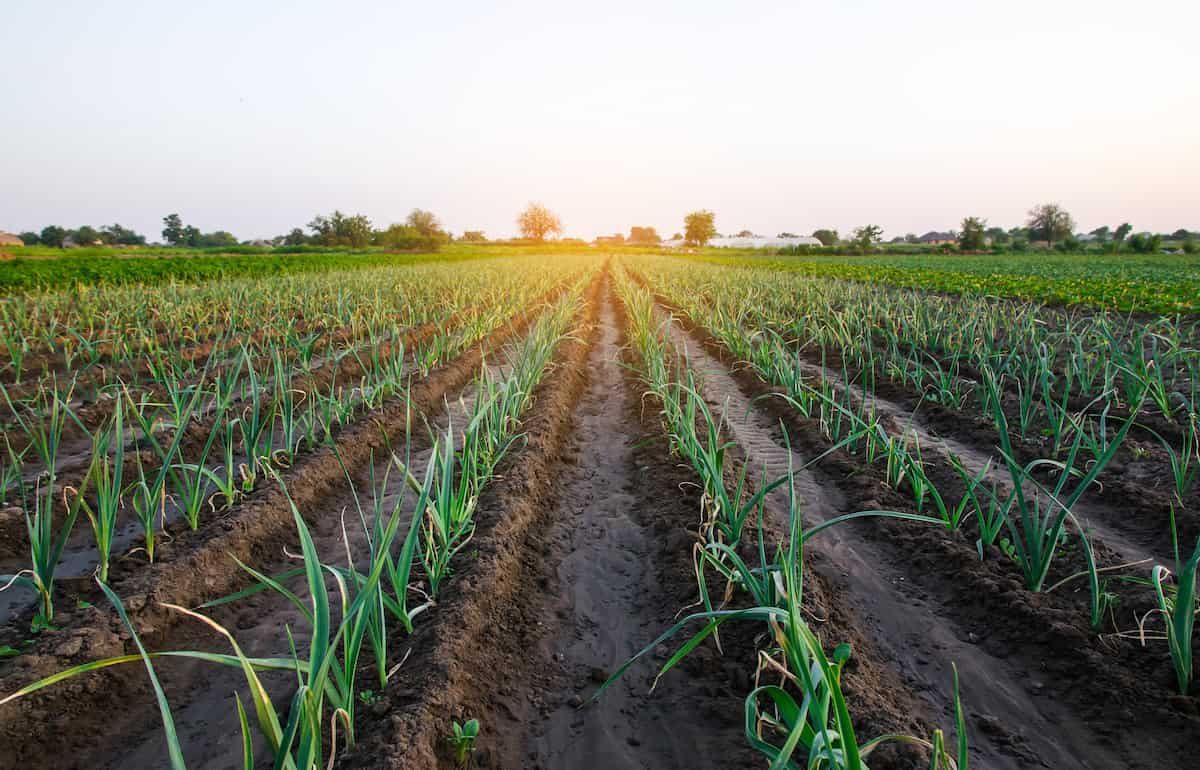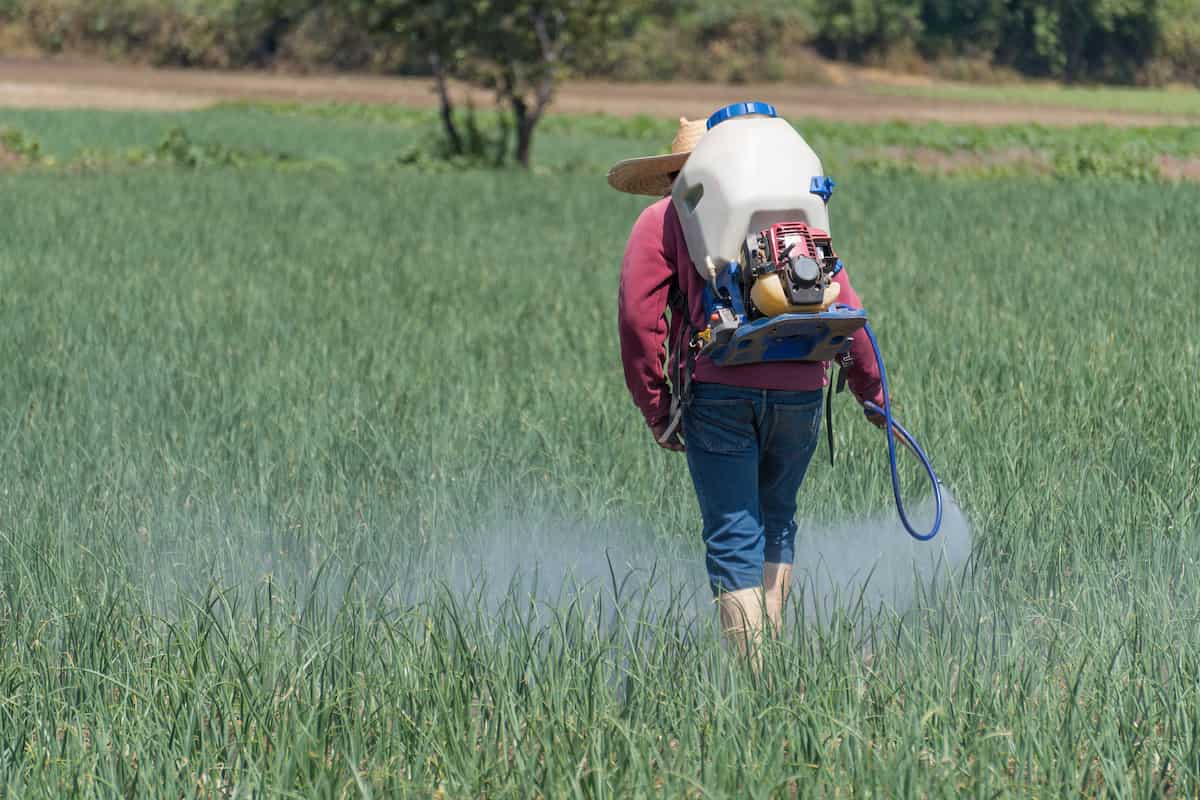Stemphylium leaf blight is a major fungal disease that affects onion crops worldwide. It is most prevalent in regions with warm and humid weather conditions. The disease can cause significant damage to the onion leaves, leading to reduced yield and quality. To manage Stemphylium leaf blight, farmers can adopt several effective strategies.

These include crop rotation, disease-resistant onion cultivars, application of fungicides, and proper sanitation practices. Studies have shown that regular monitoring of the onion crops for early signs of the disease and timely intervention can significantly reduce the severity of the disease and improve overall crop health.
Stemphylium Leaf Blight Management in Onion
What is Stemphylium Leaf Blight in Onions?
- Stemphylium leaf blight is a fungal disease that affects onion crops.
- The fungus Stemphylium vesicarium causes it.
- The disease mainly affects the leaves of the onion plant but can also spread to the bulbs.
- The symptoms include small, water-soaked lesions that turn brown and become necrotic.
- The lesions may coalesce and cause significant damage to the leaves, reducing yield and quality.
- The disease is most prevalent in regions with warm and humid weather conditions.
Onion Plant Characteristics
- Onion is a biennial plant that is commonly grown as an annual.
- It belongs to the Allium genus and is related to garlic, leeks, and shallots.
- Onions have a shallow root system and produce tall, cylindrical, and hollow leaves.
- Depending on the variety, the plant produces a bulb of different sizes, shapes, and colors.
- Onion plants are adapted to different conditions and can be grown in different climates and soil types.
Causes/Pathogen of Stemphylium Leaf Blight in Onion
Stemphylium leaf blight in onions is caused by the fungus Pleospora allii, previously known as Stemphylium vesicarium. This fungus survives on infected plant debris and thrives during favorable spring weather conditions, producing spores that can spread to nearby plants through the wind. It typically targets dead or dying onion tissue, such as leaf tips, previous disease lesions, or injured tissue from pests or hail. The disease is more likely to develop during prolonged warm and humid weather.
The Disease Cycle of Stemphylium Leaf Blight in Onion
- The fungus that causes Stemphylium leaf blight in onions survives in plant debris or soil during the winter.
- During spring, the fungus resumes growth and produces spores spread by wind or rain to nearby plants.
- Equipment or workers moving from infected fields to healthy ones can also spread the spores.
- The disease can spread rapidly under warm and humid conditions.
- The fungus enters the onion plant through wounds or natural openings, such as stomata, in the leaves.
- The infected leaves develop small, light green lesions that eventually turn brown and enlarge, causing the leaves to wither and die.
Conditions Favorable for Stemphylium Leaf Blight Spread in the Field
- Warm temperatures between 18-25°C
- High humidity levels
- Prolonged periods of leaf wetness, typically 16 hours or more
- Presence of infected plant debris or soil in the field
- Injury or damage to onion leaves, which provide entry points for the fungus
- Older onion leaves are more susceptible to infection than young ones.
In case you missed it: Damping Off Management in Onion: Symptoms, Treatment, Chemical, Biological, and Organic Control

Damage Symptoms of Stemphylium Leaf Blight
- Early symptoms are small, water-soaked, white to light yellow spots on leaves, typically found on the side of leaves facing the prevailing wind.
- These spots grow along the leaf blade and coalesce into sunken, oval-shaped, or elongated brown blotches with tan to brown centers. Concentric zones may also develop in their center.
- Advanced stages of the disease cause large necrotic areas that can girdle the leaf or seed stem, causing extensive blighting of the tissues.
- Infection can occur on radial leaves of transplanted seedlings at the 3-4 leaf stage during late March and early April.
- Symptoms of inflorescence stalks can cause severe damage to the seed crop.
- The disease can also appear as small yellowish to orange flecks or streaks in the middle of the leaves, which soon develop into elongated spindle-shaped spots surrounded by a pinkish margin.
Yield Loss Due to Stemphylium Leaf Blight on Onion
The disease starts as yellow-tan, water-soaked lesions that develop into long brown to black spots. As the lesions grow, whole leaves will die back, reducing the plant’s photosynthetic ability. Premature leaf senescence can also occur, compromising bulb quality. Yield losses of up to 90% have been reported in severely affected fields, and outbreaks have been known to reduce yield by as much as 60%.
Stemphylium Leaf Blight Management in Onion by Cultural Method
- Stemphylium Leaf Blight in onions management by cultural methods such as residue management, crop rotation, and weed management is recommended.
- Enhancing residue breakdown and burying onion leaf residue after harvest delays SLB epidemic initiation and progress in the following year’s crop.
- Crop rotation to a non-host for at least one year significantly reduces inoculum densities and SLB epidemics. Optimal thrips control can decrease S. vesicarium colonization and SLB severity, while weed management is crucial due to S. vesicarium’s broad host range.
- Certified seed and clean transplants are advised to avoid introducing S. vesicarium into the onion crop.
Stemphylium Leaf Blight Management in Onion by Biological Method
- In field trials, applying Trichoderma-based products has decreased disease incidence and severity in onion crops affected by SLB. Some Trichoderma strains have also been shown to stimulate onion growth and yield.
- Additionally, using microbial biocontrol agents such as Bacillus subtilis and Pseudomonas fluorescens effectively reduces SLB incidence and severity.
- These biological control methods offer a sustainable and environmentally friendly alternative to conventional chemical fungicides.
Stemphylium Leaf Blight Management in Onion by Chemical Method
- Chemical methods for Stemphylium Leaf Blight management in onions include using solutions of active ingredients such as azoxystrobin + difenoconazole, boscalid + pyraclostrobin, chlorothalonil, iprodione, mancozeb, and prochloraz.
- Treatments should be applied during unfavorable weather conditions for the fungus, such as cool and dry weather.
- Alternating between different products can enhance the effectiveness of fungicides.
- These methods can reduce the growth of S. vesicarium and help manage the disease in onion crops.
Stemphylium Leaf Blight Management in Onion by Organic Method
- Stemphylium Leaf Blight in onions can be achieved using natural products. Aqueous extracts of Azadirachta indica (Neem) and Datura stramonium (jimsonweed) effectively control the disease with efficacy similar to conventional fungicides.
- These extracts contain compounds with antifungal properties that can inhibit the growth and spread of S. vesicarium.
- Using these natural products as part of an integrated pest management strategy.
Preventive Measures for Control of Stemphylium Leaf Blight
- Choose resistant onion varieties.
- Plant rows in the direction of the prevailing wind to minimize periods of leaf wetness.
- Reduce plant density to promote good airflow.
- Ensure proper field drainage before planting.
- Avoid excessive nitrogen fertilization, which can increase disease severity.
- Cultivate and bury plant debris and culls after harvest.
- Practice crop rotation for 3-4 years with non-host plants.
In case you missed it: Banana Sigatoka Disease Management: Symptoms, Treatment, Chemical, Biological, and Organic Control

Conclusion
Stemphylium Leaf Blight is a devastating disease that can significantly impact onion yield and quality. Effective management requires a combination of preventive measures, cultural practices, and the judicious use of chemical, biological, and organic control methods, depending on the specific conditions of each onion crop.
- Types of Fungicides Used in Agriculture
- Common Issues in the Fruit Development Stage of Pomegranate Farming
- Fruit Development Issues in Papaya: Easy Solutions and Treatment
- Soil-Borne Diseases and How to Protect Your Plants
- Practices to Prevent Disease Spread in the Garden
- From Wilted to Thriving: How to Treat Root Rot Naturally in Houseplants
- Natural Remedies to Cure Brown Spots on Fig Tree Leaves
- Natural Solutions for Poinsettia Problems: 100% Effective Remedies
- How to Control Calla Lily Problems: Natural Remedies for Leaf and Flower Problems